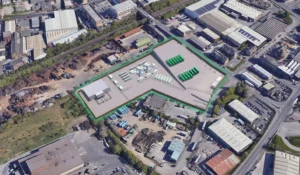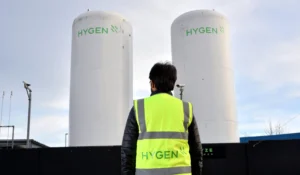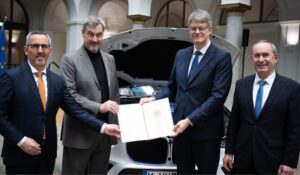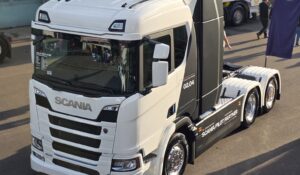Bradford hydrogen: Toyota and Council in talks for hydrogen taxi trials
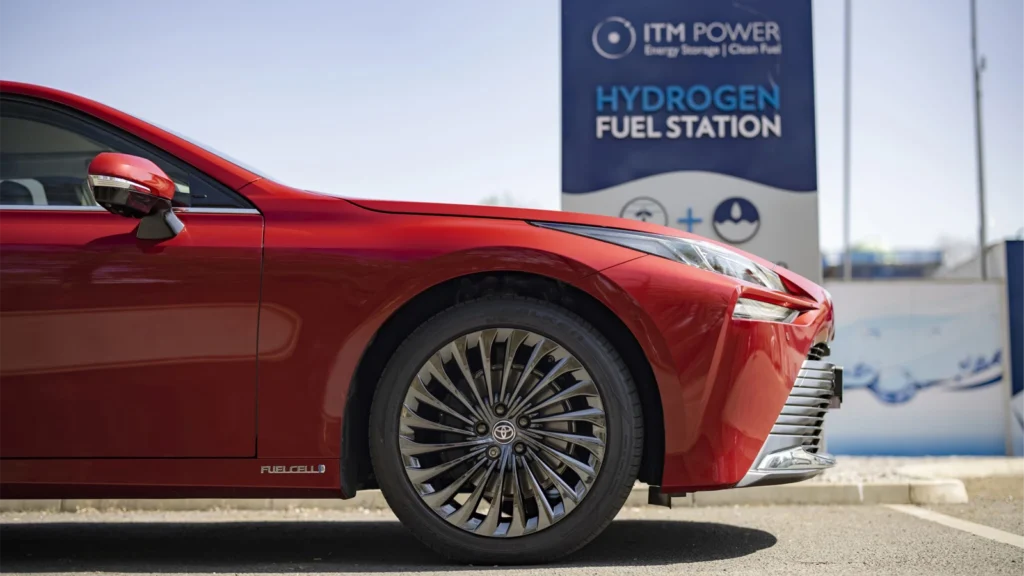
Hydrogen taxis could soon be plying their trade in Bradford as the council talks with Toyota about a pilot scheme, as reported by the Telegraph & Argus.
It’s a logical next step for a city with serious hydrogen ambitions – what with Hygen (backed by JCB’s Bamford family) investing in the UK’s largest hydrogen production plant in the city, alongside the council’s ongoing clean air push.
At a recent meeting of Bradford Council, it was revealed that this development could lead to a partnership with Toyota, trialling hydrogen fuel cell taxis in the city using the site as a refuelling hub.
The council also reaffirmed its broader goal of decarbonising the district’s taxi and private hire fleet, stating: “The Council continues to look at potential alternative funding sources and is also in discussions with Toyota regarding a Pilot Hydrogen Taxi Programme, involving fuel cell Mirai cars, to coincide with the roll out of hydrogen infrastructure in the district.”
Bradford is gearing up to host one of the UK’s largest hydrogen production sites at the former Birkshall Gas Works site, a project expected to generate £120 million for the local economy and create 125 jobs.
The facility will produce 12.5 tonnes of hydrogen per day – enough to sustain a fleet of fuel cell vehicles and potentially remove around 800 diesel-fuelled buses from West Yorkshire’s roads daily.
The project is being delivered by joint venture partners N-Gen and Hygen, with support from Bradford Council.
A zero emissions taxi solution better suited to operators?
Since declaring a climate emergency in 2019, Bradford has been busy. The Clean Air Zone and its taxi fund have already put over 500 electric cabs on the road, with that number expected to hit 800 – the most outside London, according to the council.
But hydrogen adds another option, and for taxi drivers, it’s a compelling one.
Unlike battery-electric taxis, which need downtime to charge, a fuel cell Mirai can be refuelled in minutes and keep going.
Same electric drive, same zero tailpipe emissions, but with hydrogen generating electricity on demand rather than relying on a battery. Makes sense for a fleet that needs to keep moving to make money, doesn’t it?
The hydrogen infrastructure question
Hydrogen taxis require dedicated refuelling infrastructure, just as petrol and diesel vehicles always have. But, unfortunately, refuelling stations are currently thin on the ground.
But this isn’t some insurmountable challenge – petrol and diesel vehicles have relied on dedicated filling stations for over a century, and hydrogen simply operates under the same model.
The difference is that hydrogen infrastructure is still in its infancy, but with a production hub right in the city, Bradford is well-placed to make this work.
The Mirai pilot, then, has the potential to prove that hydrogen taxis can be just as practical and accessible as any other fleet vehicle.
Hydrogen taxis in the wild
Toyota’s Mirai isn’t untested in the world of taxis. The fuel cell saloon car has already been deployed in several European cities, including Paris and Brussels, where it has proven itself as a viable zero-emissions alternative to battery-electric, petrol, diesel, and hybrid.
The world’s largest hydrogen taxi firm, Hype, has been running hydrogen taxis in Paris since 2015 and has steadily expanded its operations, including a presence in Brussels.
The fleet has covered extensive mileage in real-world taxi service, with reports indicating consistent daily use and strong operational viability for fuel cell electric vehicles in urban transport.
Meanwhile, in Hamburg, Best Taxi has integrated 25 Mirais into its fleet as part of the city’s push for emission-free taxis by 2025.
These deployments showcase the Mirai’s practicality in demanding urban environments, providing a glimpse into how hydrogen taxis could work in the UK.
What’s next?
Bradford’s pilot, assuming it goes ahead, could be the first real test of hydrogen taxis outside London. It’s not the first trial, nor will it be the last, but it’s another piece of evidence in the wider push to see where hydrogen fits into urban transport.
Details on this project are still thin on the ground, but Bradford is serious about hydrogen, and this trial fits right into the city’s growing ambitions. With a production site incoming and infrastructure slowly falling into place, the pieces are there for something meaningful.
Hydrogen taxis aren’t mainstream yet, but they’re inching into the picture. If this works, Bradford could set a precedent for other UK cities looking for alternatives to fossil fuel and battery electric taxis – minus the downtime.

